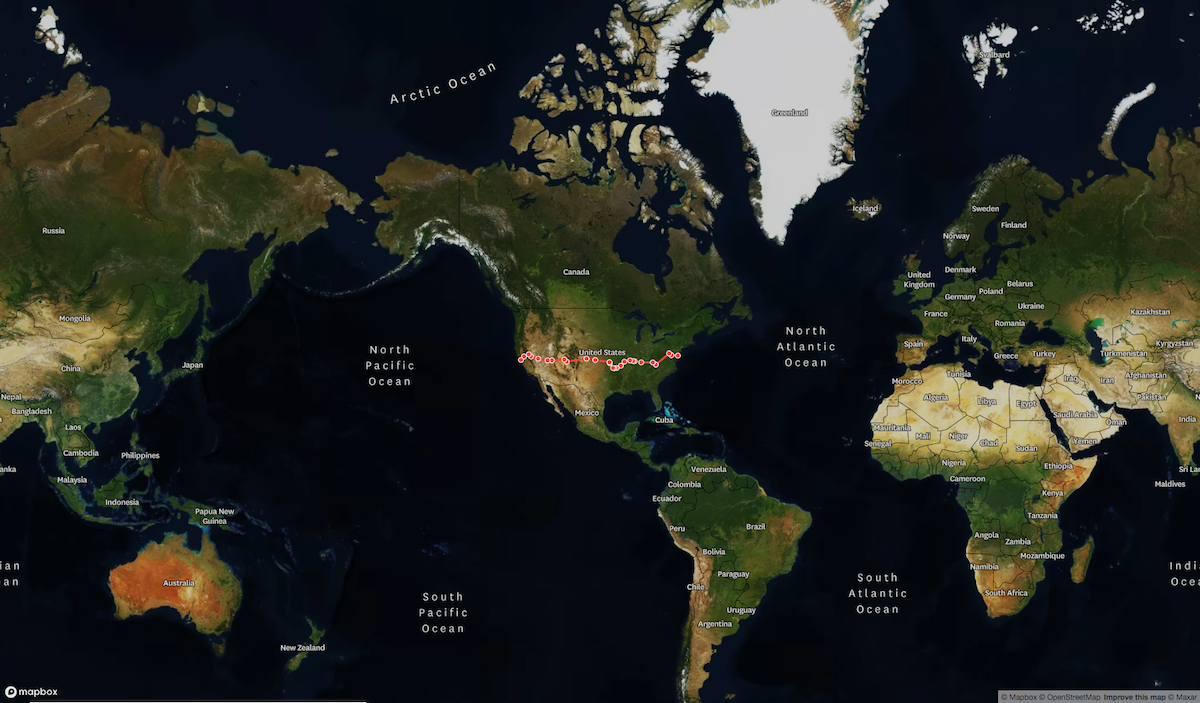
|
Beginning in San Francisco and ending on the shores of Delaware, the cross-country event grew out of the 1968 National Trails System Act, which Congress approved to promote laying trails in urban and rural settings for people of all ages and abilities. HikaNation also served as the inaugural event for the American Hiking Society, formed in 1976.
(Click on all images for larger versions.) |
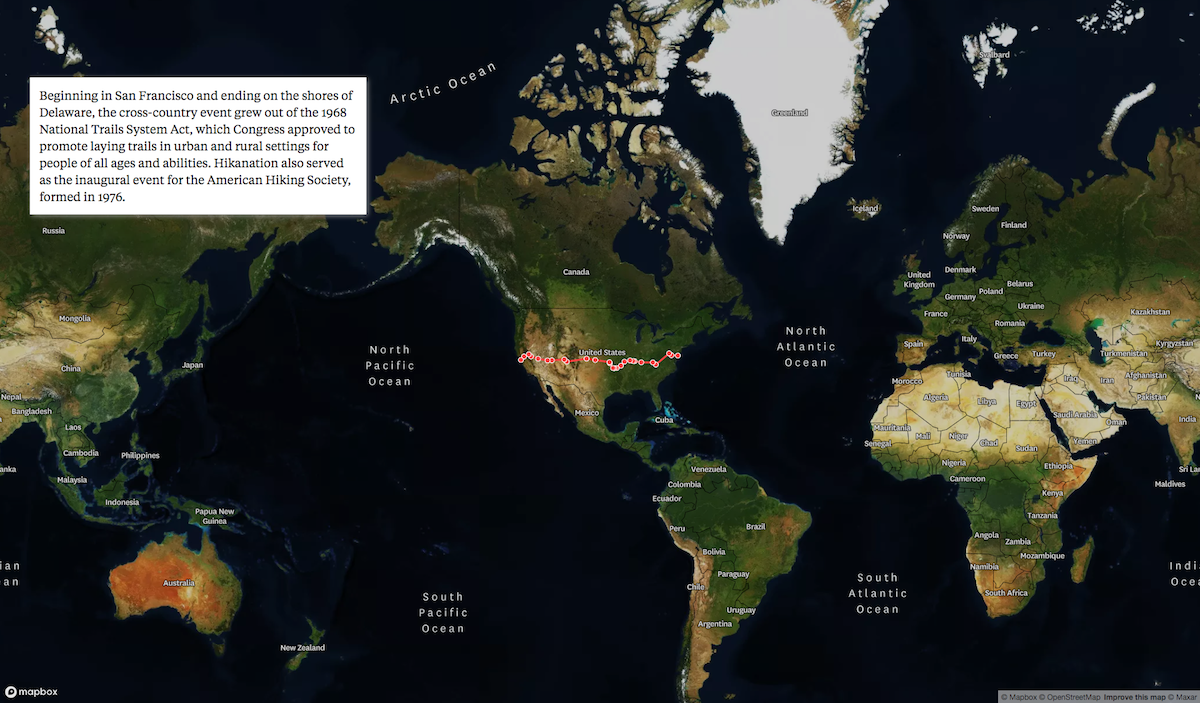
|

|
HikaNation officially began at the Polo Grounds in Golden Gate Park with about 80 committed backpackers who gathered there from across the country to begin the journey east. (Photo provided by American Hiking Society via Mike McReynolds.)
|
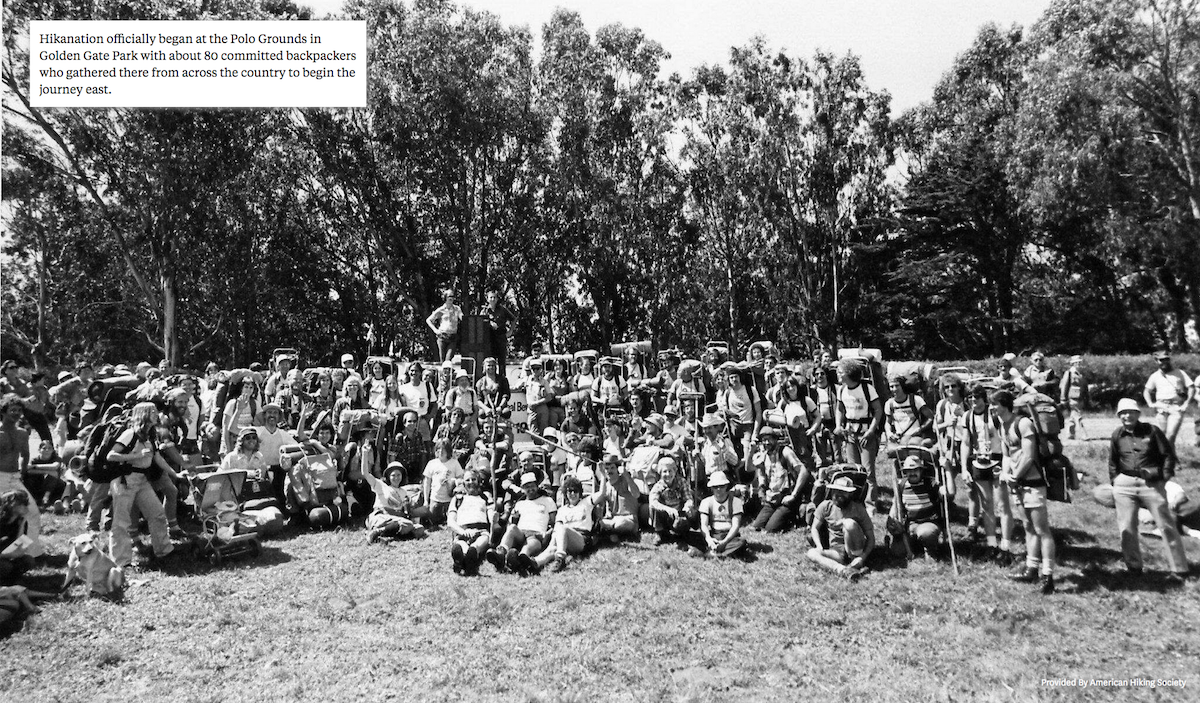
|
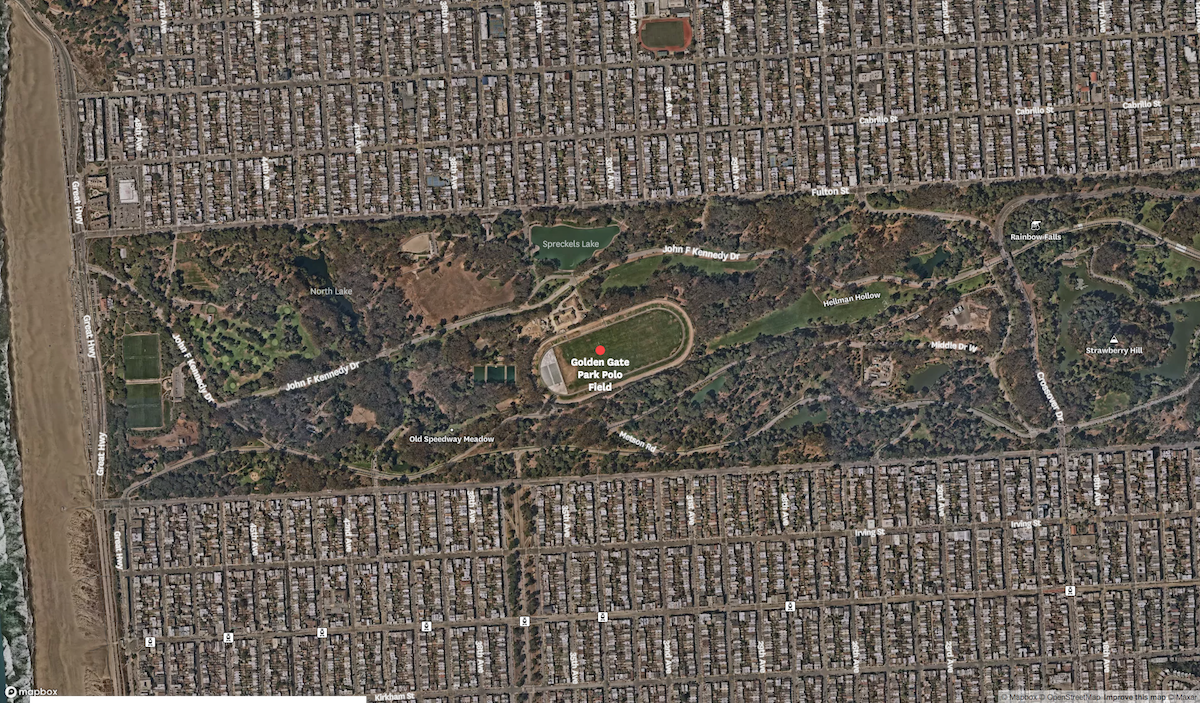
|
Most packed spare clothes, camping stoves and gas, as well as some personal effects - all loaded into the bulky, aluminum open-frame packs of the era. One couple, Gayle Rainbow (left) and Dennis "Gomer" Pyles, brought their newborn daughter, Jiamie Pyles. (Inset photo provided by American Hiking Society via Mike McReynolds.)
|

|
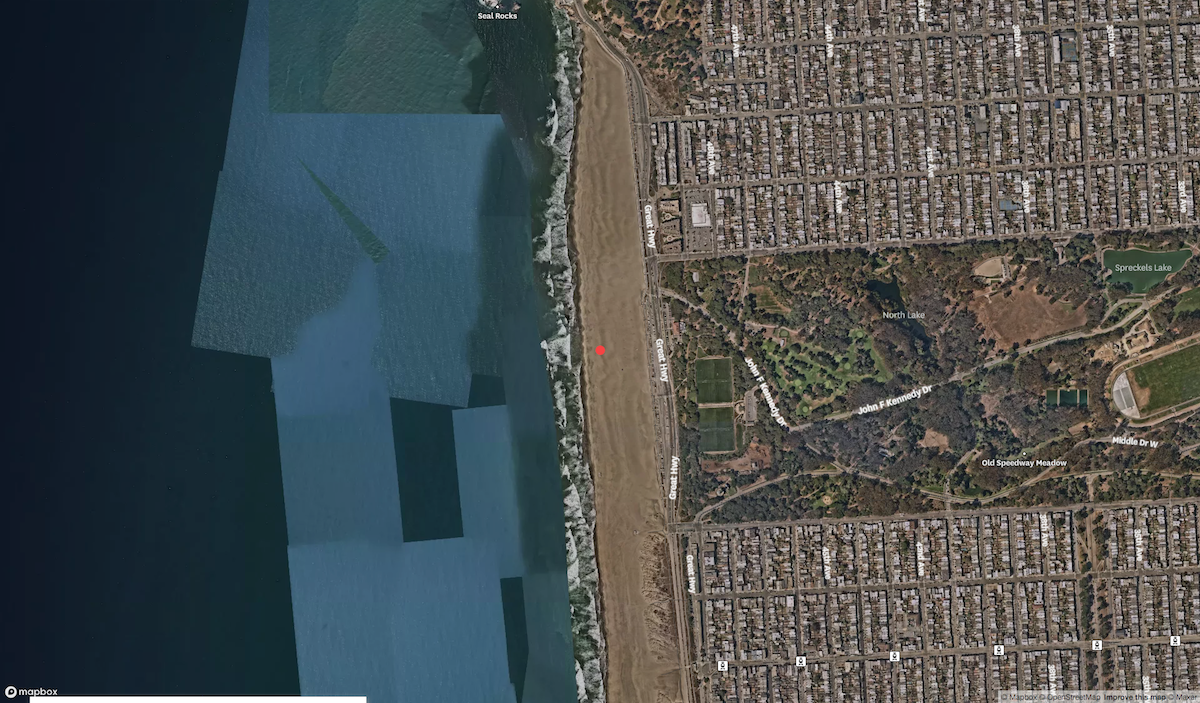
|
| In keeping with the spirit of the coast-to-coast endeavor, the backpackers began their hike by dipping their boots into the surf at Ocean Beach. (Inset photo provided by American Hiking Society via Mike McReynolds.)
|
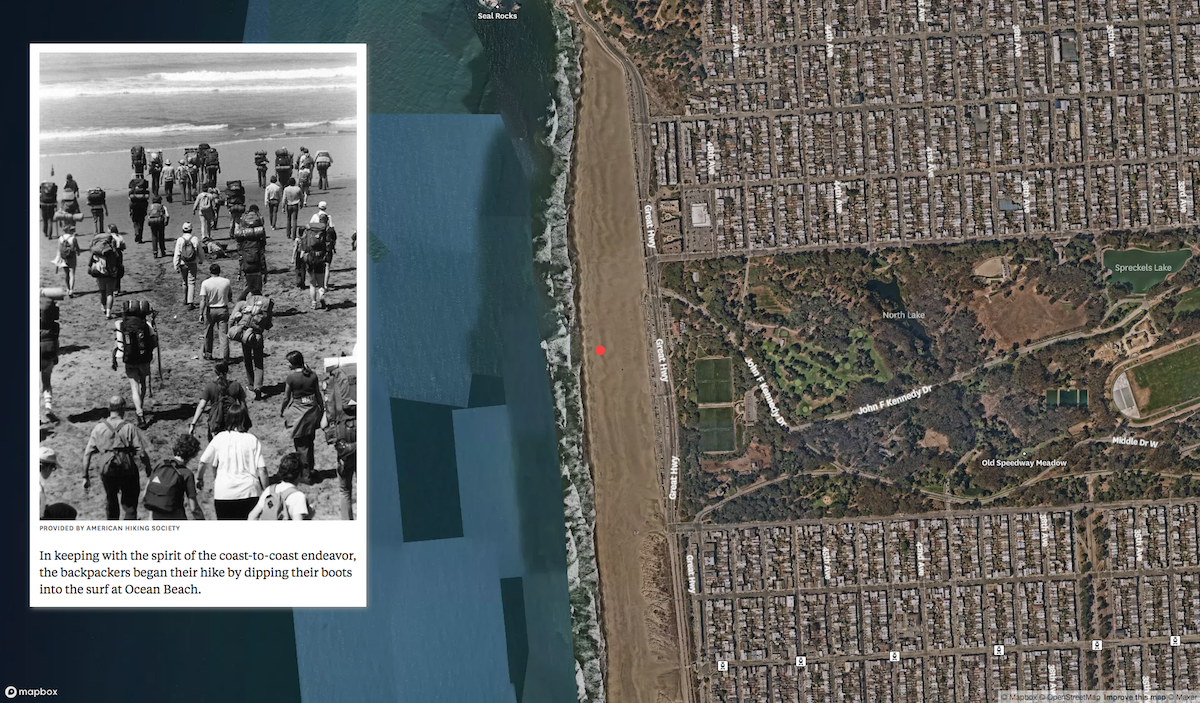
|

|
During the hike, backpackers slept in large groups wherever they could find space. The first night they slept under the Fremont Street overpass near the foot of the Bay Bridge. "It was very noisy and uncomfortable on the hard pavement," said William Ewart, 68, HikaNation's archivist. "But there wasn't anywhere else around that we could have camped." (Inset photo provided by American Hiking Society via Mike McReynolds.)
|
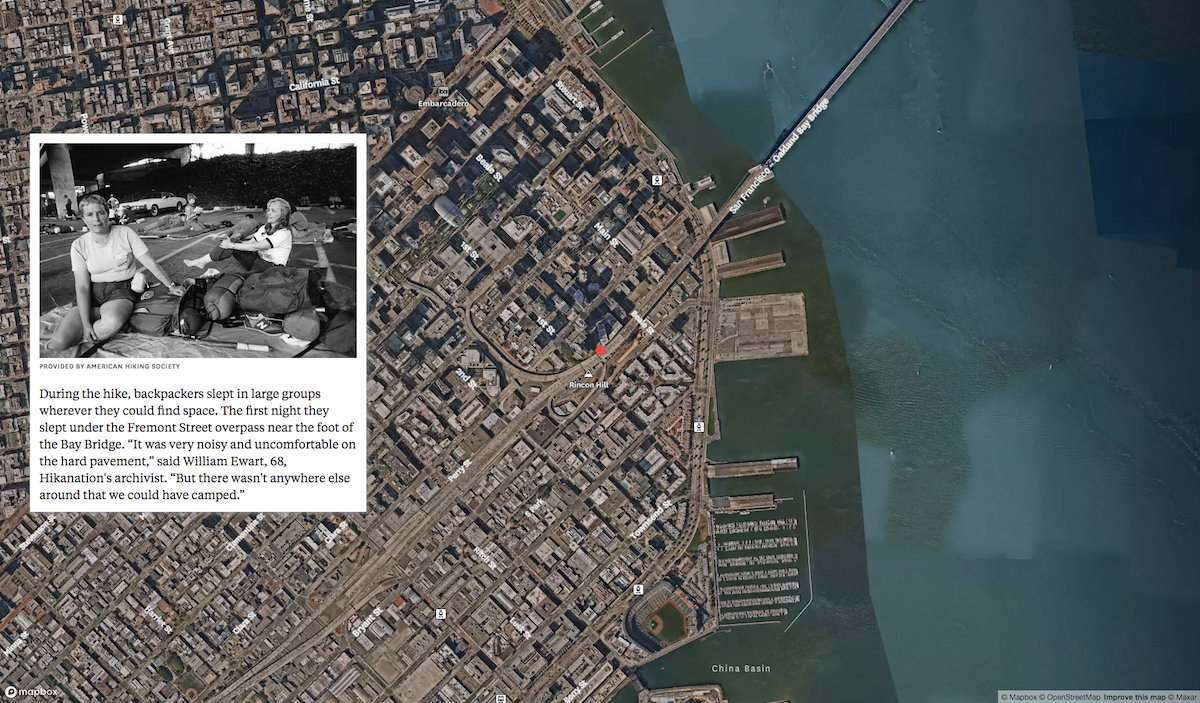
|

|
The morning of the Bay Bridge crossing was clear and warm. Thousands of eager walkers amassed to take advantage of the chance to traverse the bridge on foot. Two lanes on the westbound deck were closed that morning - one for the hikers and a second buffer lane for safety. (Inset photo provided by Jim Lambert.)
|
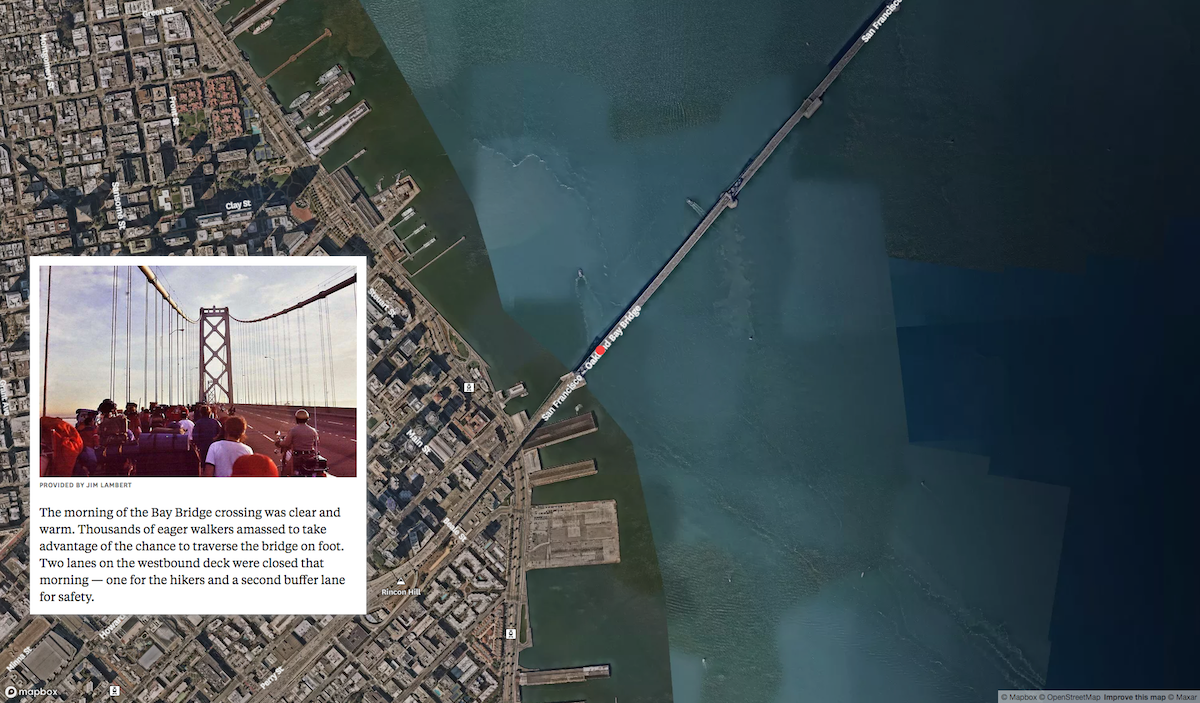
|

|
"It was fun, very scenic," said Ewart, pictured here. "But we had a time limit to get across the bridge. It was very rushed." Many hikers came away with blisters from the quick pace. (Inset photo provided by William Ewart / HikaNation.com)
|

|
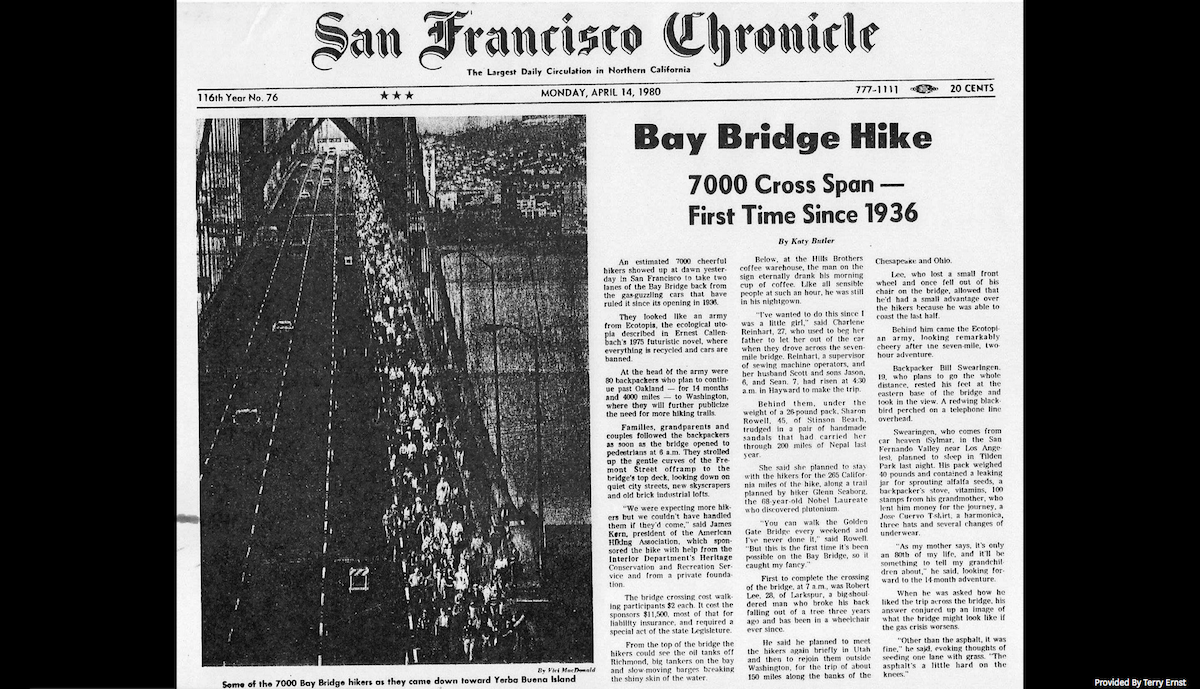
|
| An estimated 7,000 people joined the bridge walk to Oakland. "They looked like an army from 'Ecotopia', the ecological utopia described in Ernest Callenbach's 1975 futuristic novel, where everything is recycled and cars are banned," The Chronicle wrote in a front-page account of the event published April 14, 1980. (Article provided by Terry Ernst.)
|
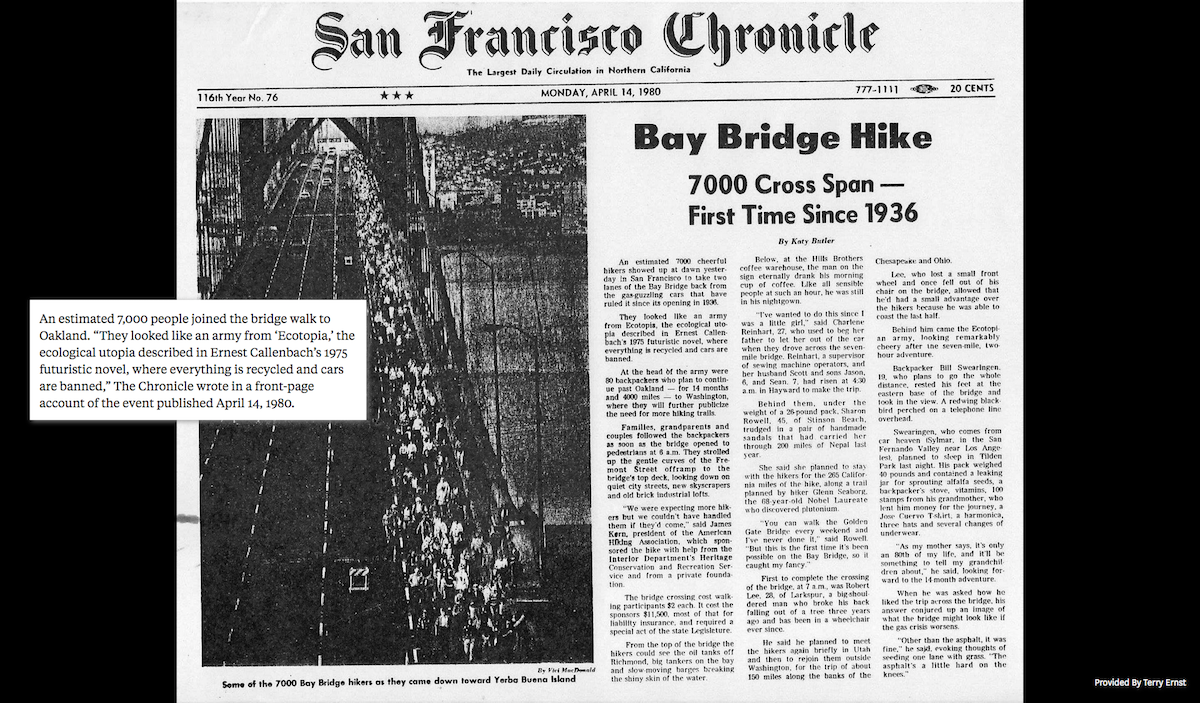
|

|
Shutting down the bridge's traffic lanes was a huge undertaking credited largely to Glenn Seaborg, a Nobel Prize-winning chemist and avid hiker (pictured fourth from left). He and his wife, Helen, lobbied for government approvals to cross the bridge and also mapped out a west-east route for hikers to follow through California. (Photo provided by American Hiking Society via Mike McReynolds.)
|
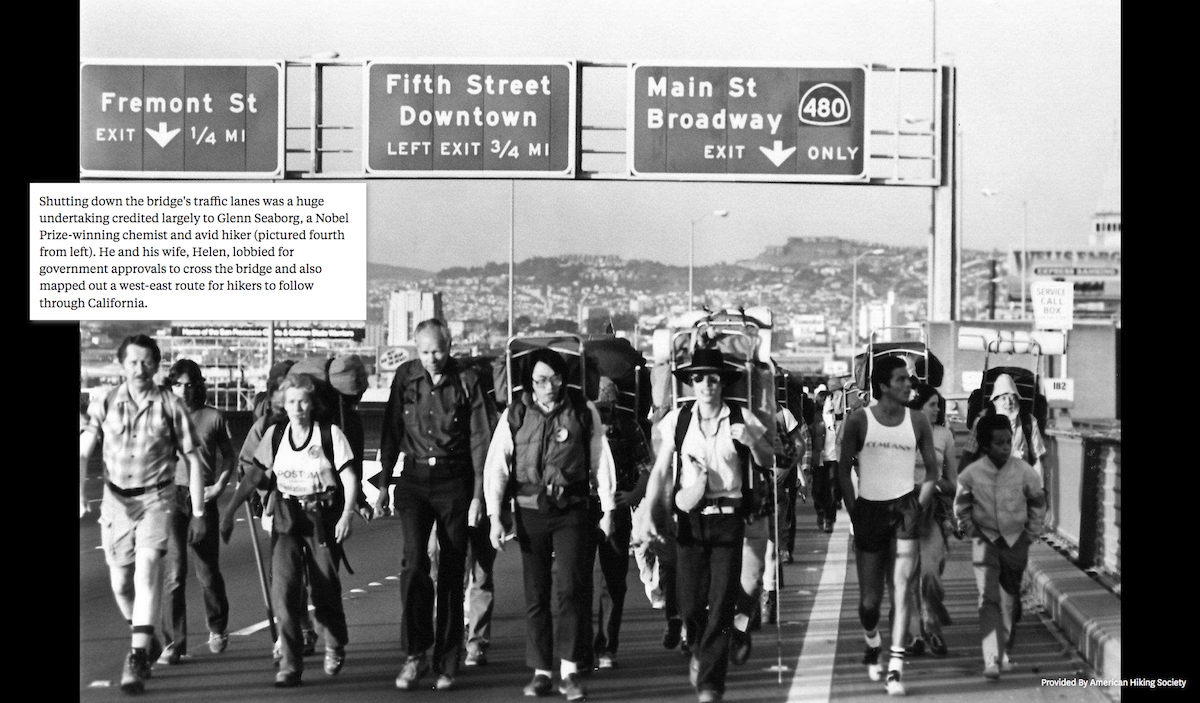
|
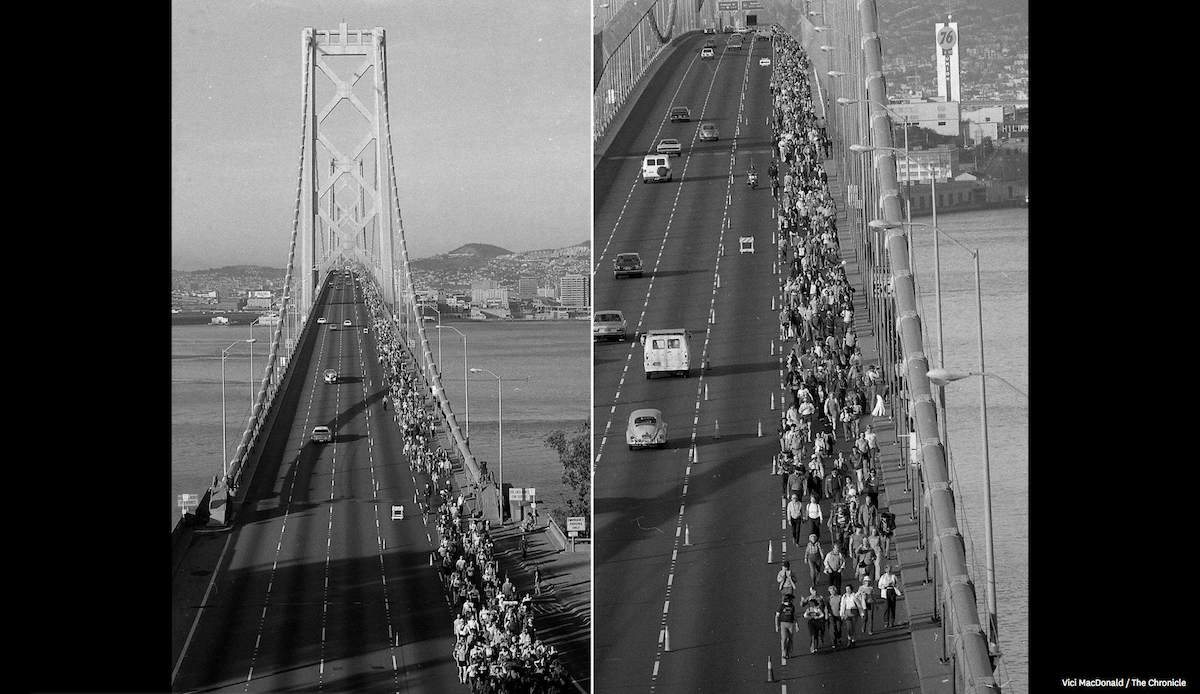
|
"I didn't realize how involved and detailed it was to get the route on the ground," Ewart said. "Now that I've thought about it, I'm amazed at the work people did to organize it." (Photo by Vici MacDonald / The Chronicle.)
|
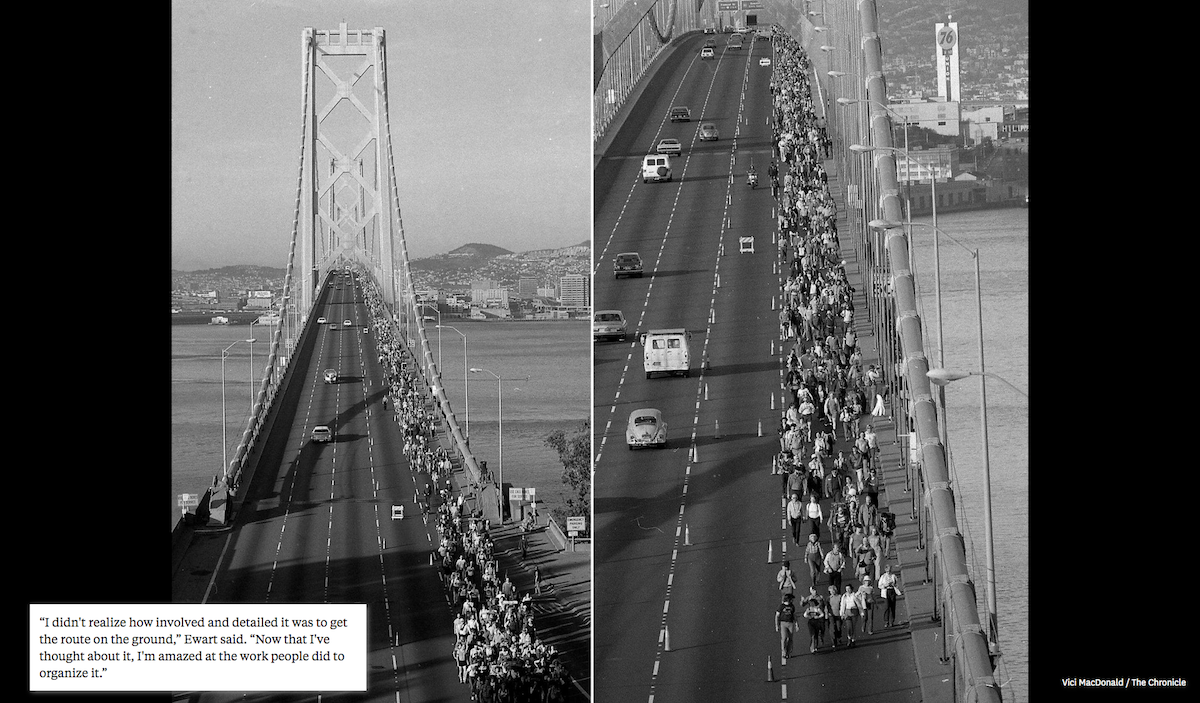
|

|
In an official proclamation supporting the bridge walk, Oakland Mayor Lionel J. Wilson wrote: "The purpose of HikaNation is to direct the public's attention to hiking as a non-energy consuming activity and to point out the need for more hiking paths and trails throughout both urban and rural areas of the country." (Article provided by Mike McReynolds.)
|
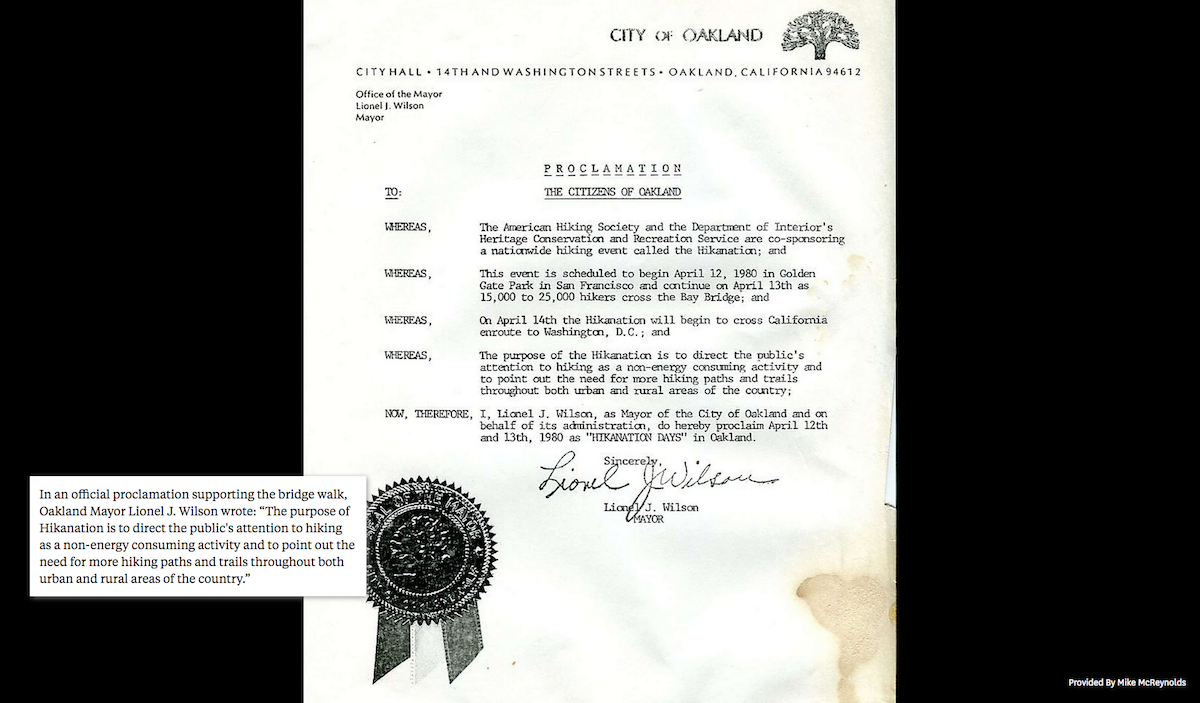
|
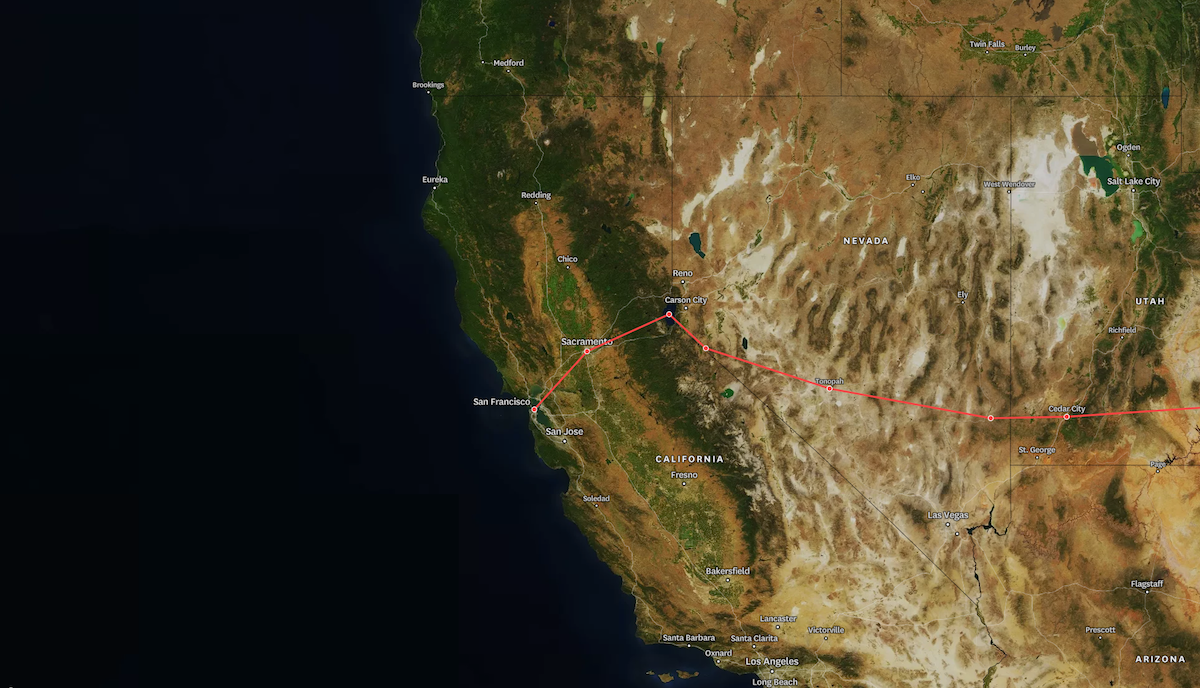
|
The route Seaborg laid out measured about 265 miles across the state and was meant to be hiked in 21 days.
"The hikers jokingly (I think) accused me of underestimating the actual mileage, and added a term to their lexicon - 'Seaborg miles' - for miles that seemed (or were) much longer than expected" Seaborg wrote in his 1999 book, "Adventures in the Atomic Age". (Inset photo provided by Jim Lambert.)
|
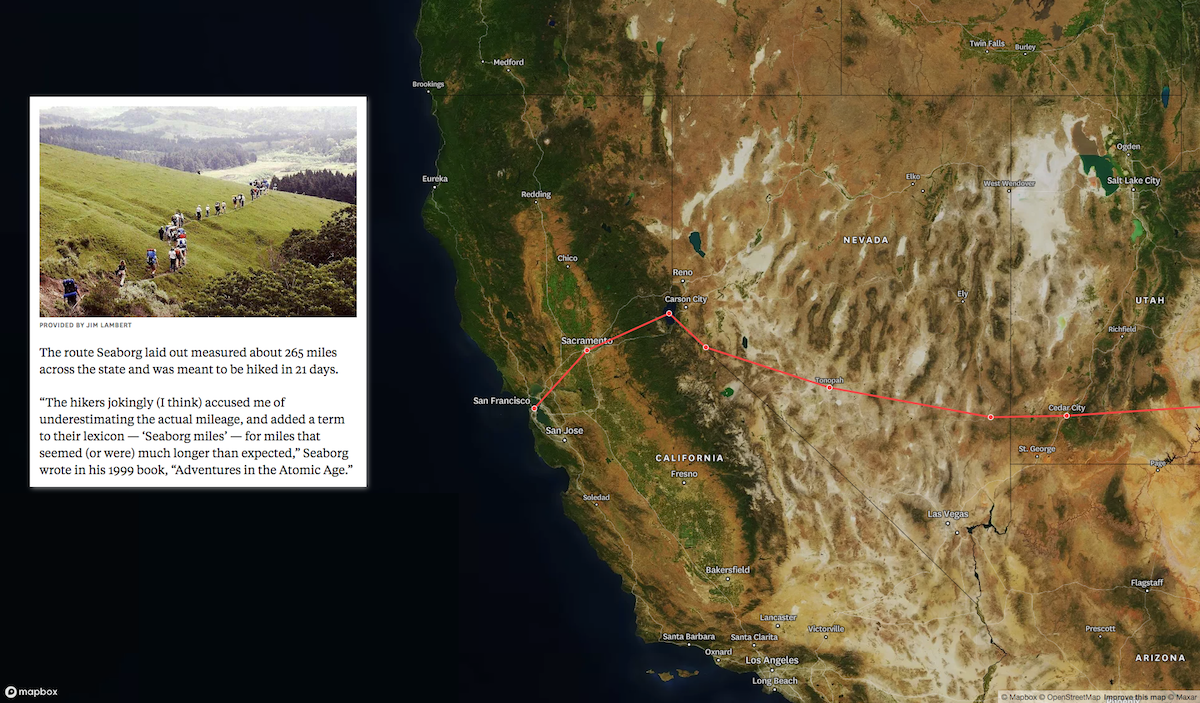
|
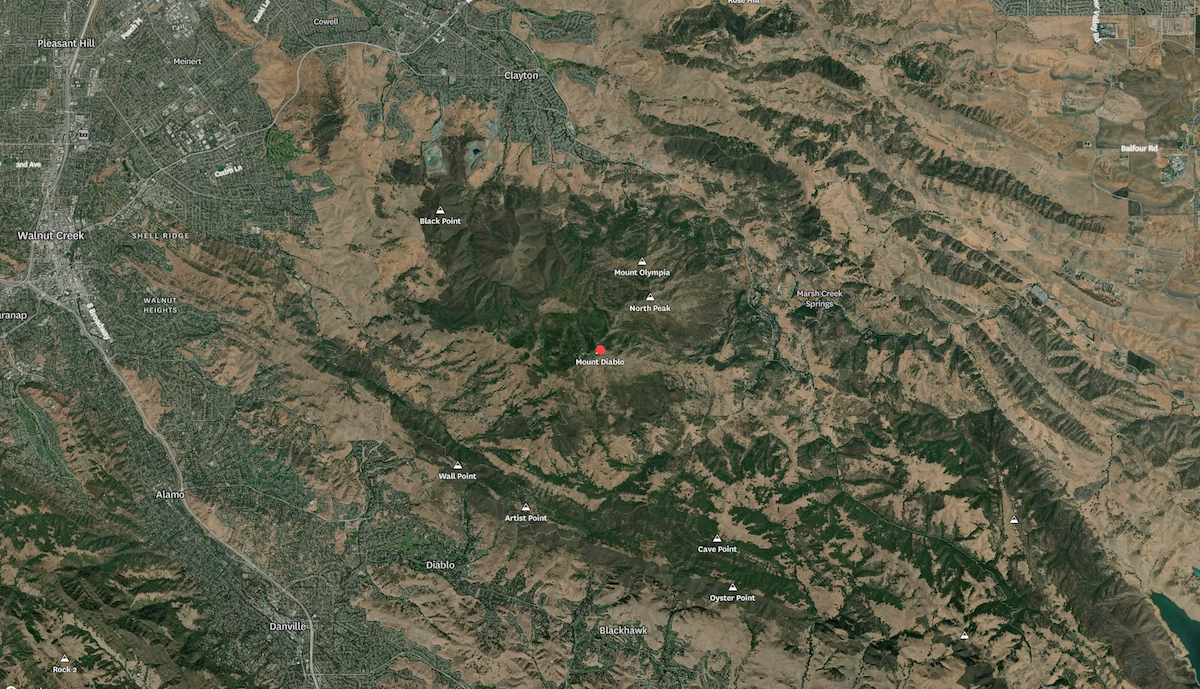
|
| Backpackers hiked through the East Bay hills and over Mount Diablo, pictured here. (Inset photo provided by Jim Lambert.)
|
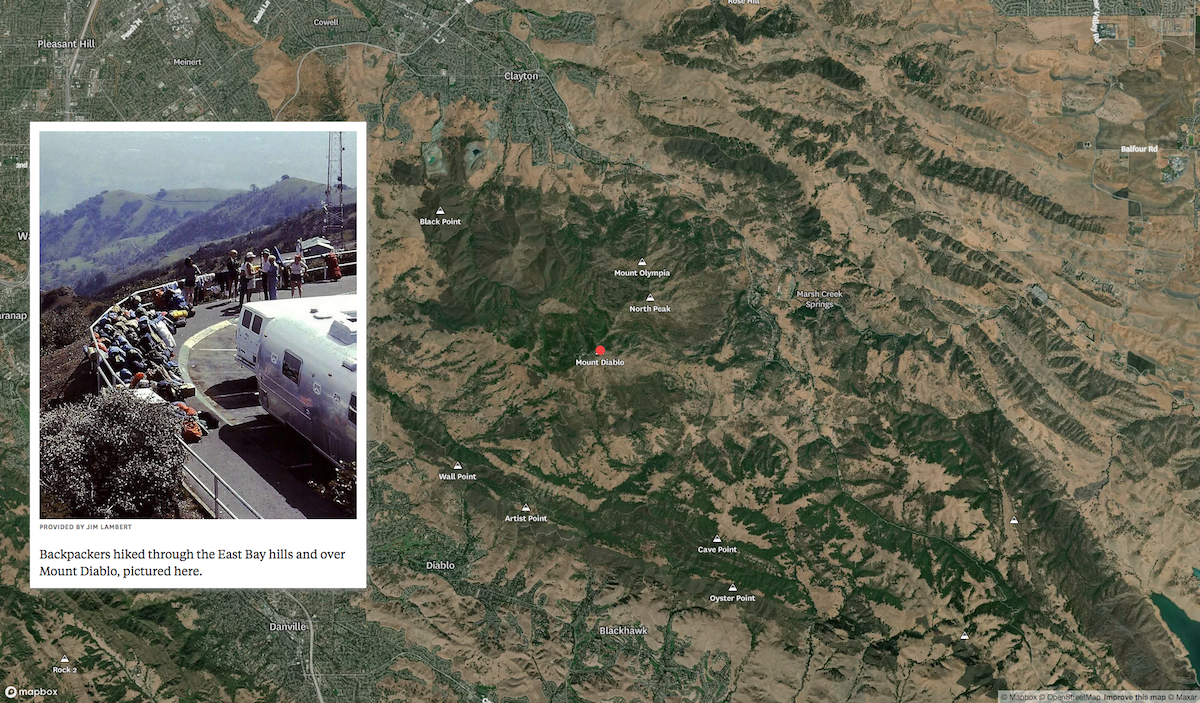
|

|
Finding places where 80 backpackers could sleep was sometimes challenging. Space was often limited at sites in California, so campers slept in close-quarters, Ewart said. Complicating the sleeping arrangements was an ongoing feud between early risers and late risers. "They were always harping on us to keep it quiet at night but in the morning they'd make noise banging on their pots and pans" Ewart recalled. (Inset photo provided by Marce Guerrein.)
|
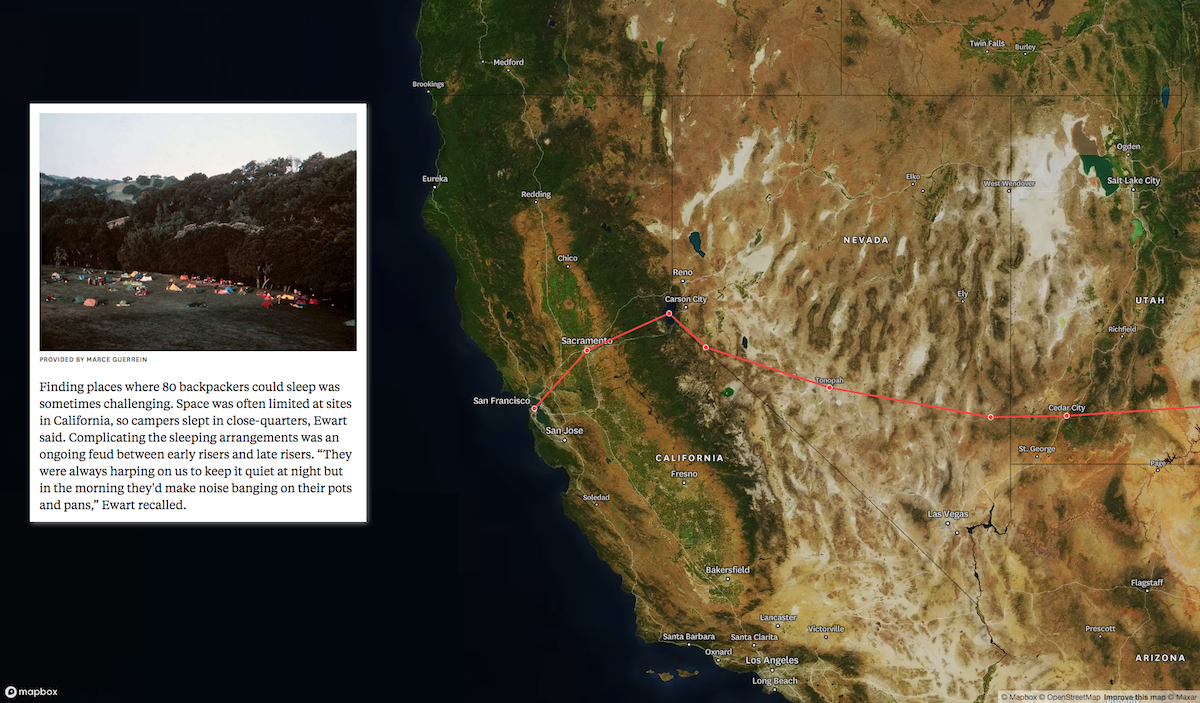
|
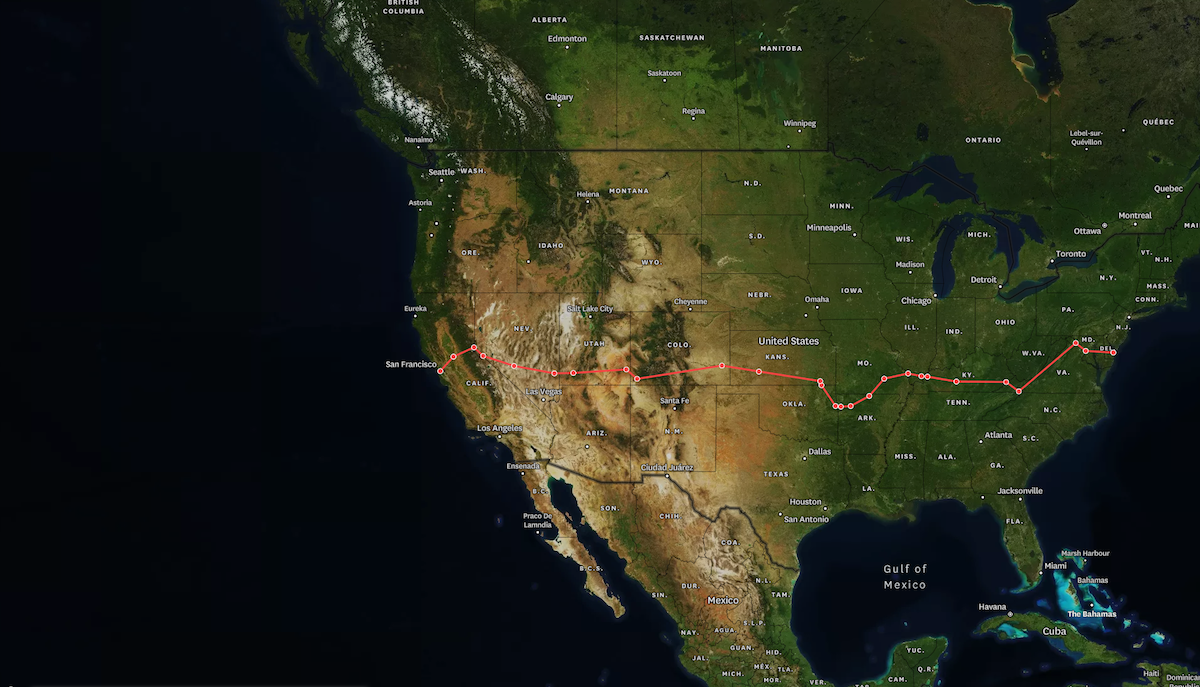
|
Much of the route through California traced highways and main roads. But in Nevada, Utah and Colorado, the path weaved through more natural open spaces, Ewart said. "Those states were the best ones because we were on backroads and trails a lot of the way." (Inset photo provided by William Ewart / HikaNation.com.)
|
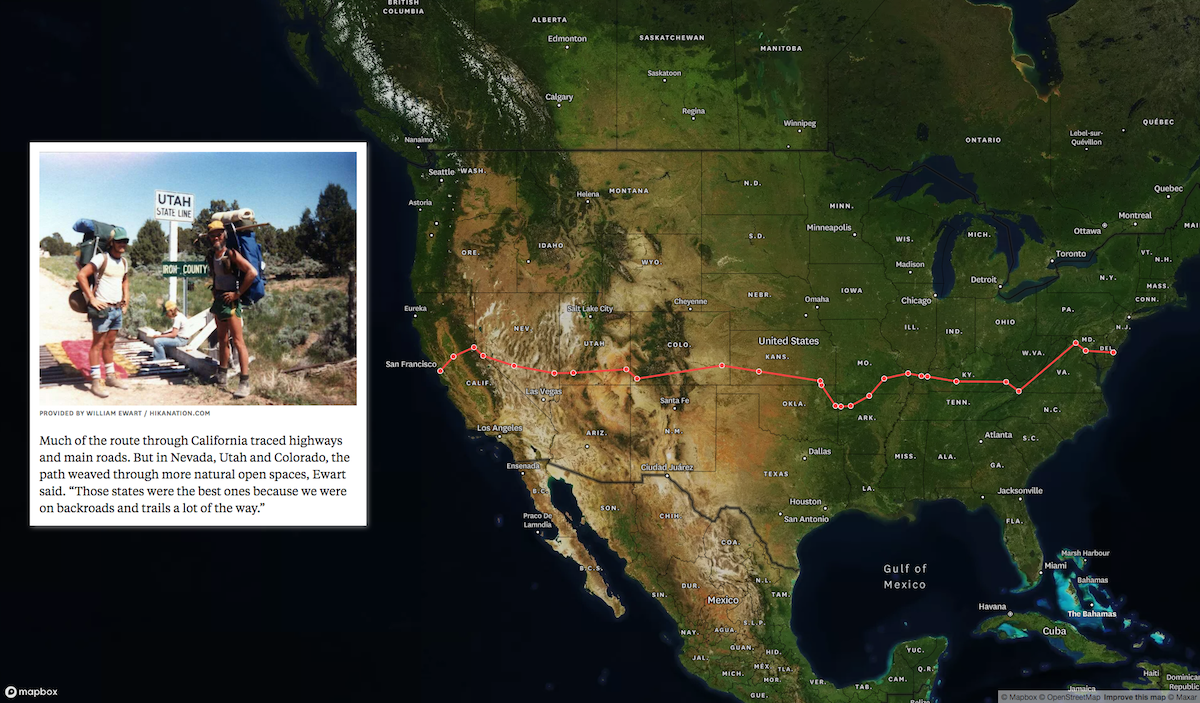
|

|
Each state had a designated coordinator responsible for plotting a course and arranging sleeping locations each night.
Settling on the distances of appropriate miles per day could be challenging because hikers traveled at different paces. The group would often self-stratify into clumps of similarly skilled hikers and meet up at the sleep locations each evening.
As the cross-country hike progressed, backpackers came and went from the group, though a core of about 35 stuck out the entire trip. (Inset photo provided by William Ewart / HikaNation.com.)
|
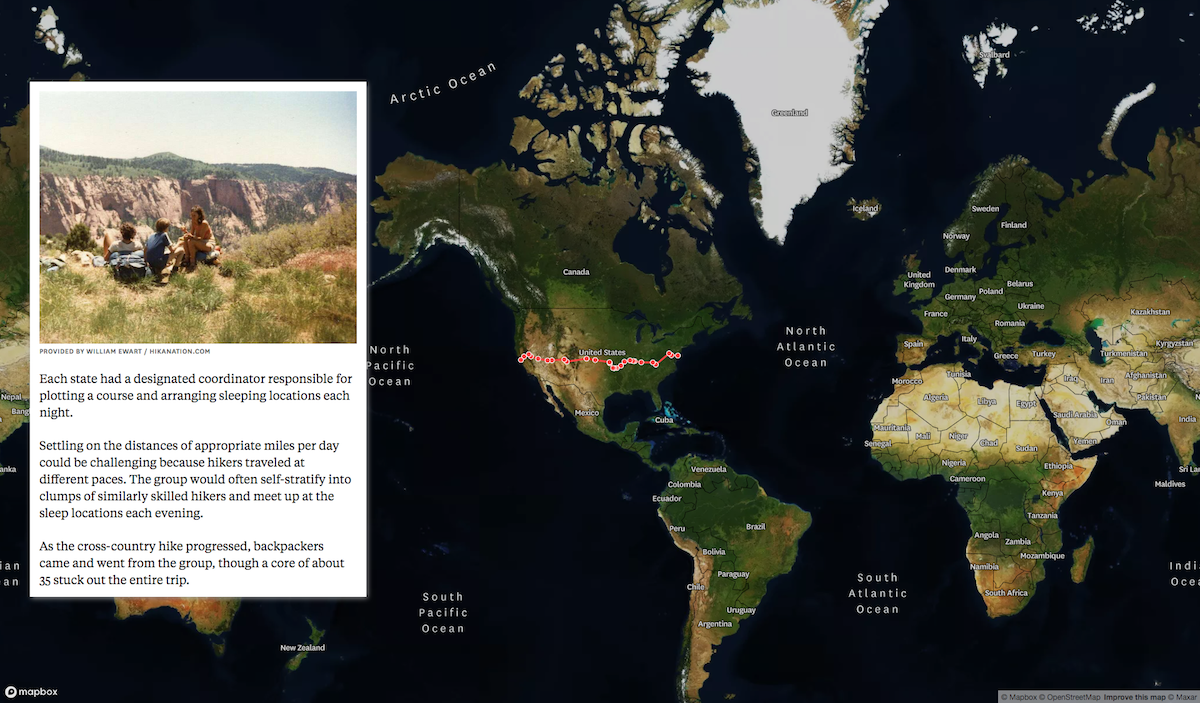
|
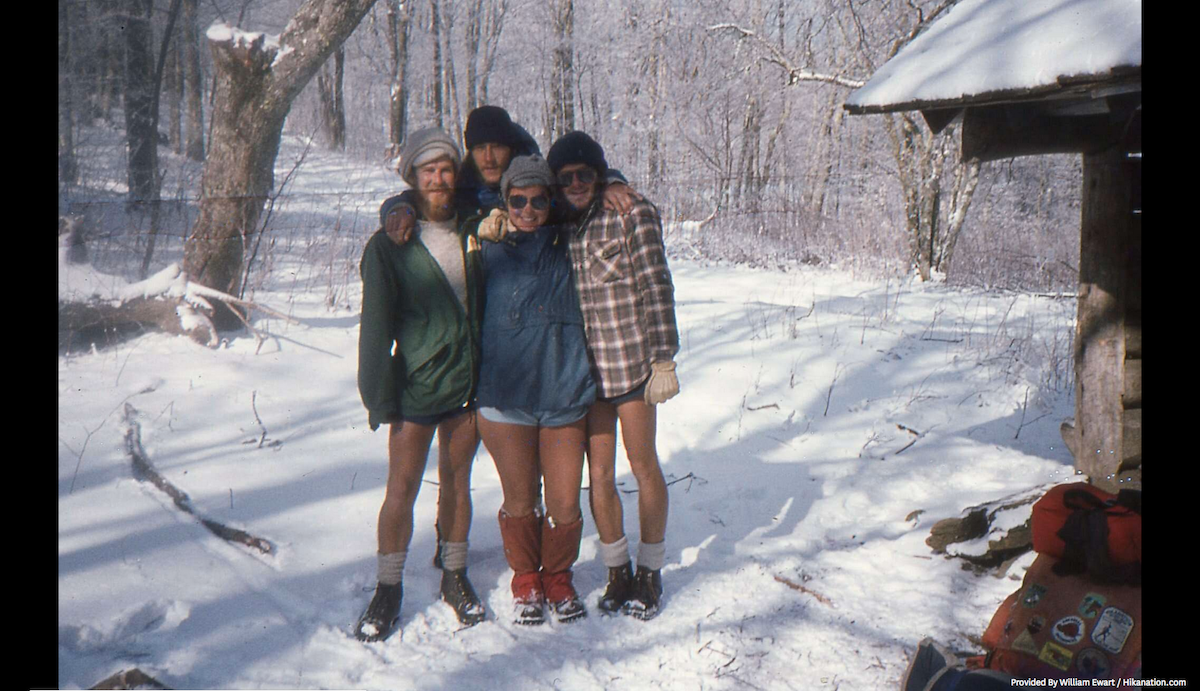
|
Ewart described himself as a loner but said he "enjoyed the camaraderie" among the hiking crew.
"The whole purpose was to have people come and join for however much they wanted to join," he said. "We had people merge into the group. After two weeks, I thought they'd been there the whole time." (Photo provided by William Ewart / HikaNation.com.)
|
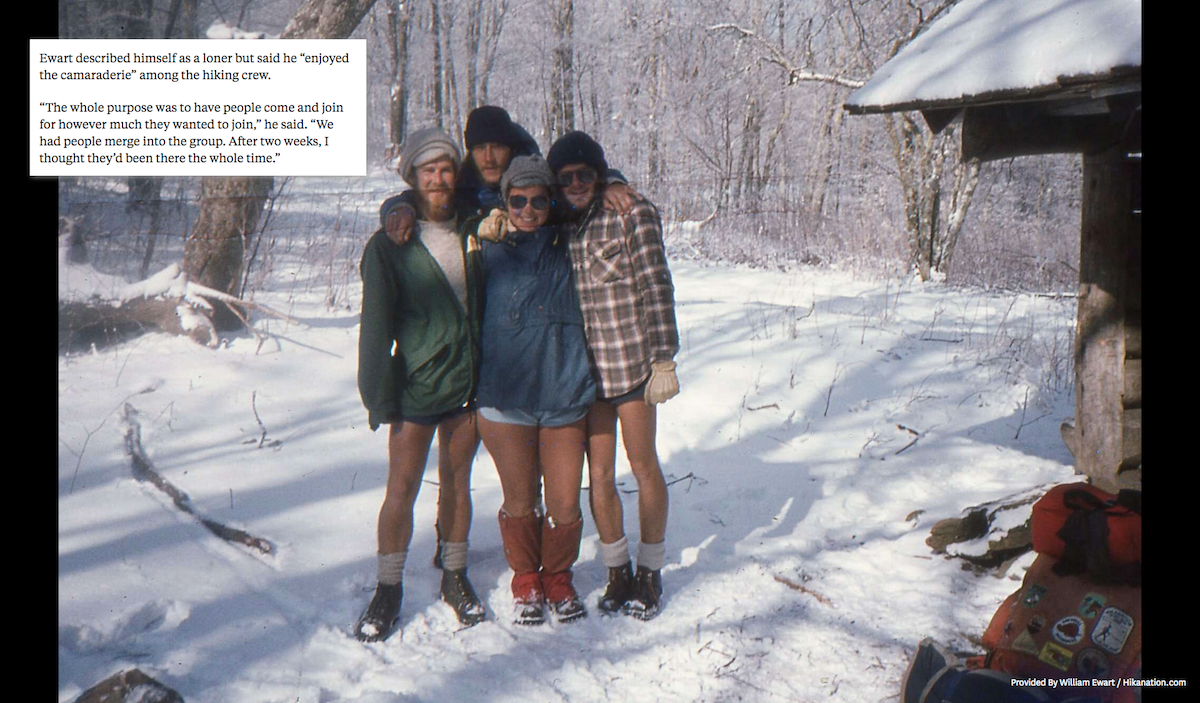
|
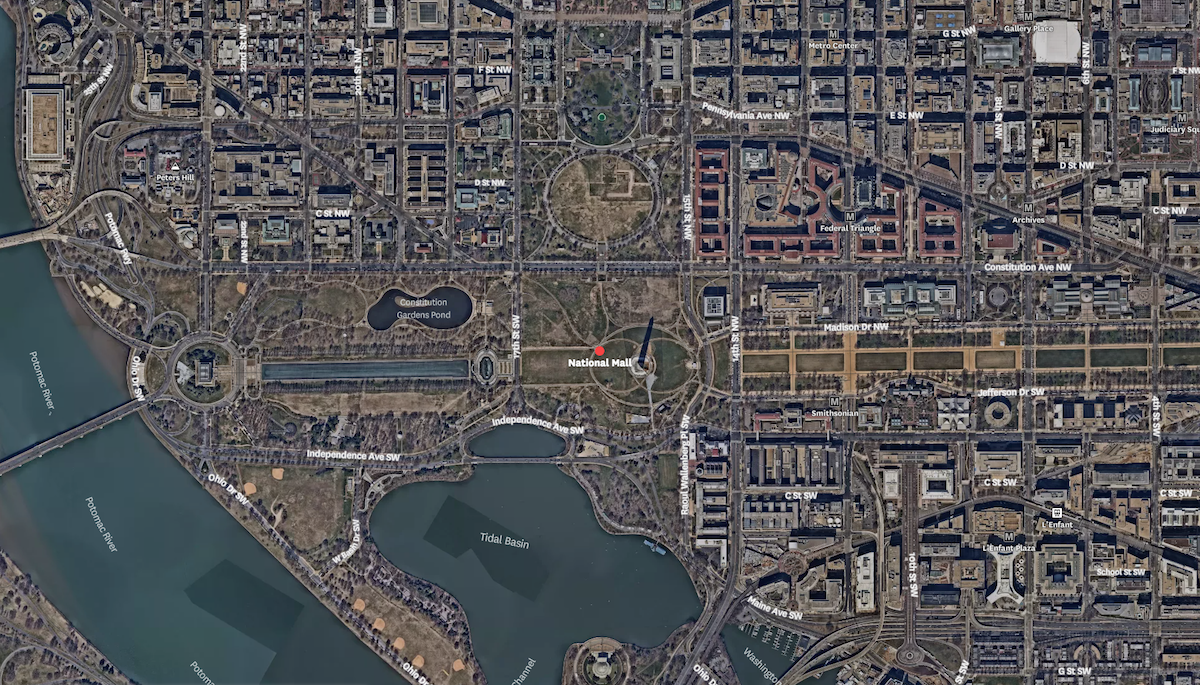 < <
|
| When they arrived in Washington, D.C., in May 1981, backpackers visited the National Mall and U.S. Capitol Building. (Inset photo provided by William Ewart / HikaNation.com.)
|

|
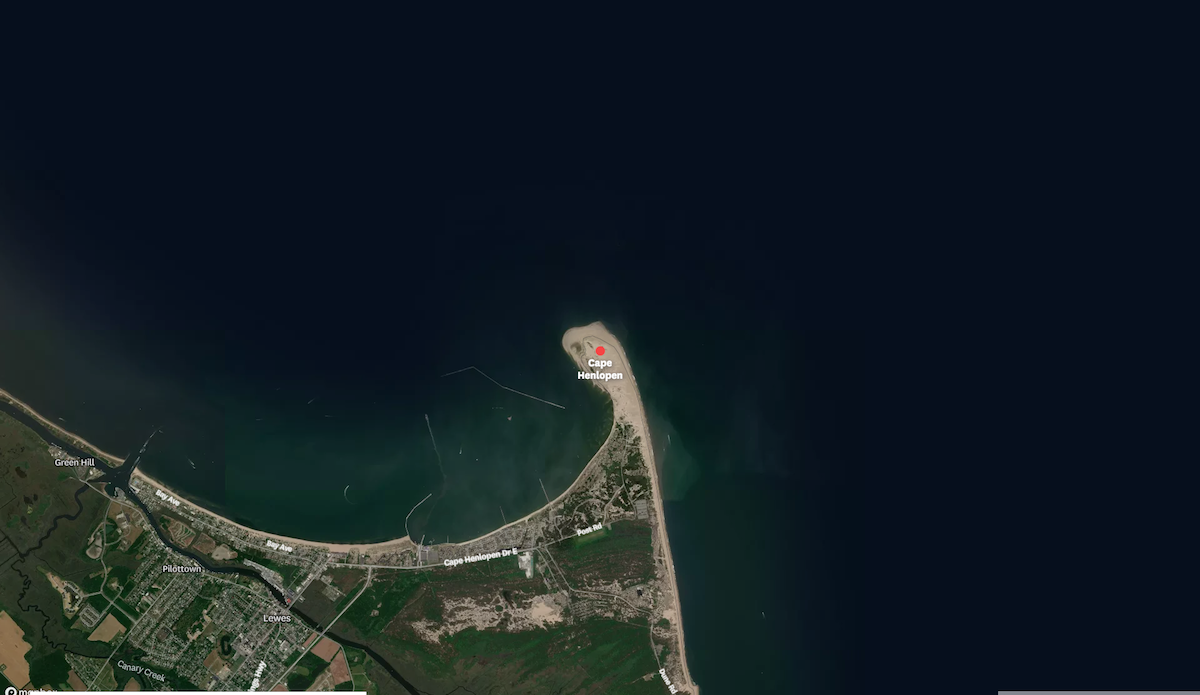
|
| On May 27, 1981, backpackers reached the Delaware shore at Cape Henlopen, a sandy spit of land poking into the Atlantic, marking the conclusion of HikaNation. Many waded into the ocean in celebration. The route passed through 14 states and covered 4,286 miles. (Inset photo provided by William Ewart / HikaNation.com.)
|
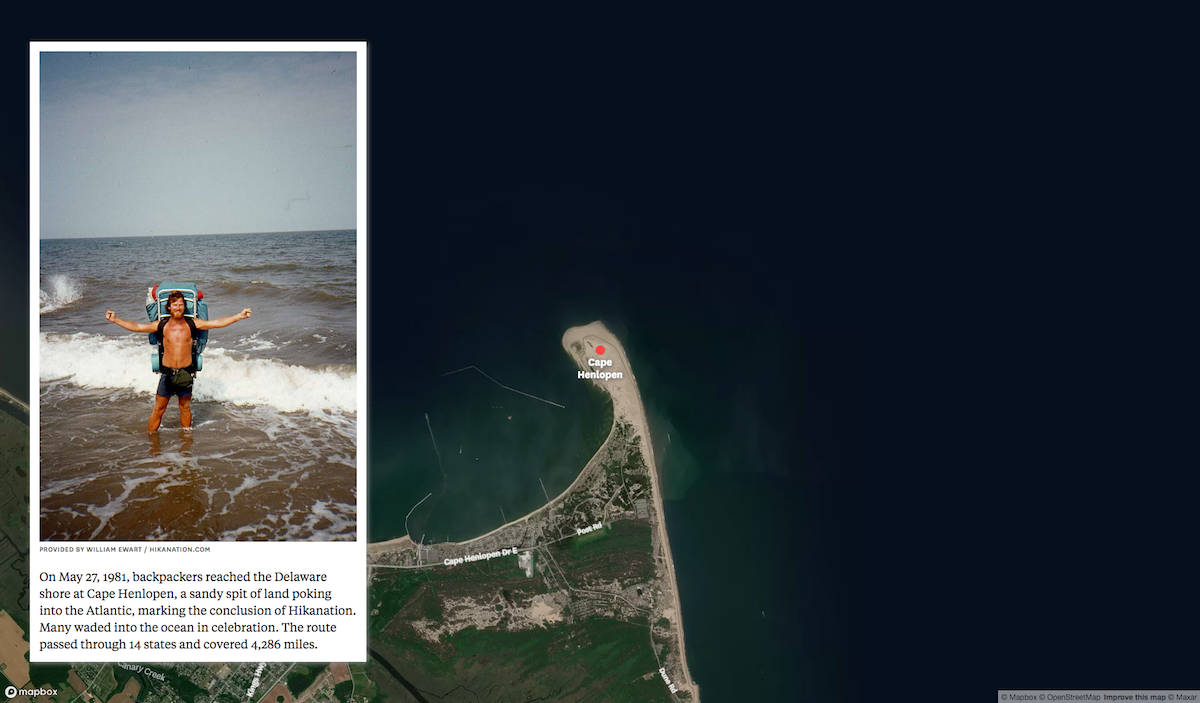
|
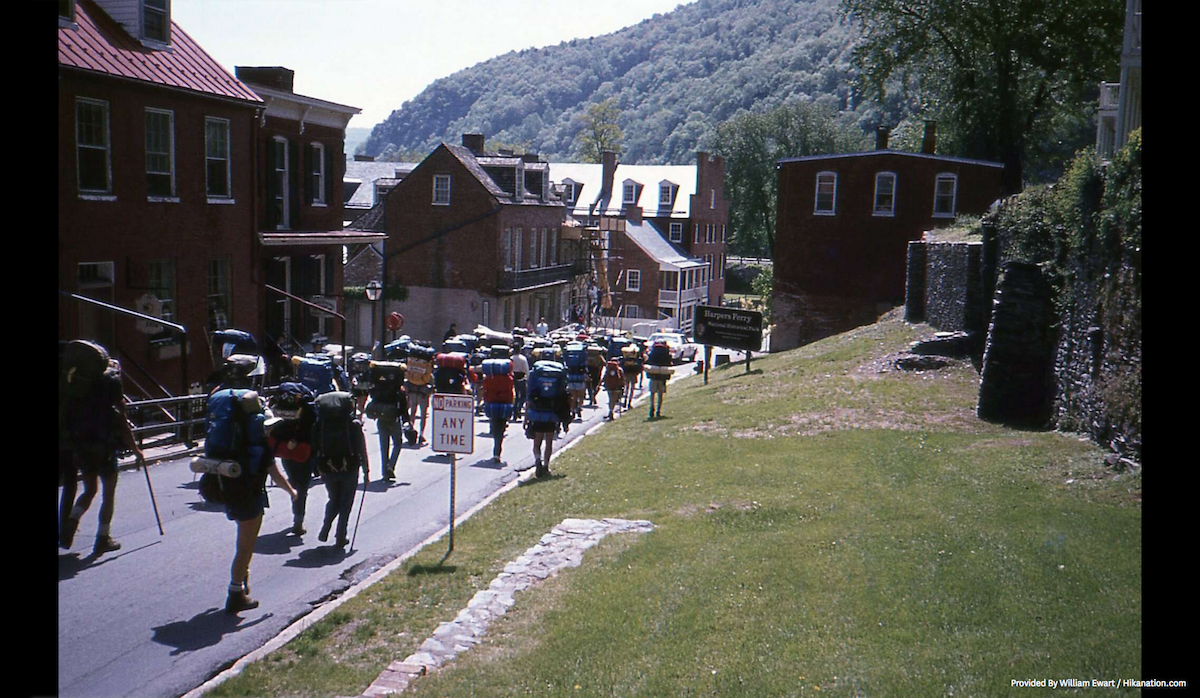
|
HikaNation's legacy is in part embodied in the American Discovery Trail, the only west-east cross-country trail. It extends across the middle of the country and is open to hikers, bicyclists and, in most places, equestrians too. And the journey started with a bunch of backpackers hiking across the Bay Bridge, an event that hadn't been accomplished since the bridge's opening in 1936. (Photo provided by William Ewart / HikaNation.com.)
|
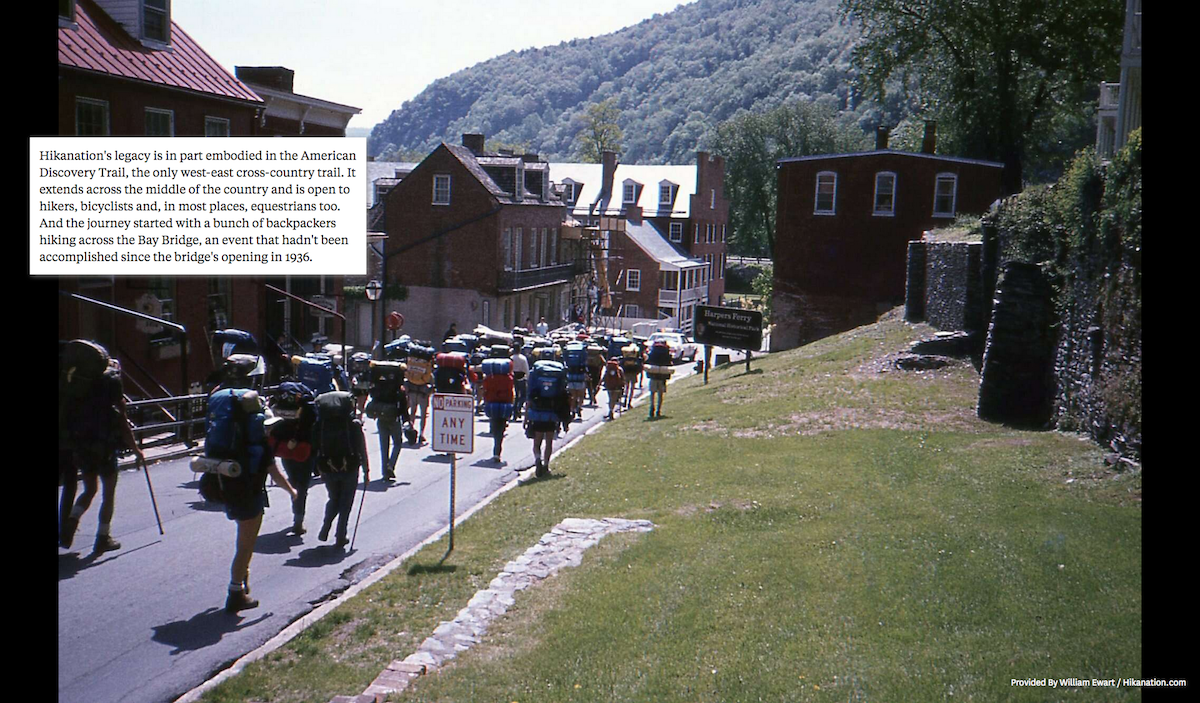
|



|
HikaNation: How a historic
cross-country backpacking
revolution started on the Bay Bridge
CREDITS
REPORTING
Gregory Thomas - gthomas@sfchronicle.com - @gregrthomas
EDITING
Robert Morast - robert.morast@sfchronicle.com - @rmorast
VISUALS EDITING
Emily Jan - emily.jan@sfchronicle.com - @EmilyBJan
DESIGN AND DEVELOPMENT
Alex K. Fong - alex.fong@sfchronicle.com - @alexkfong
Evan Wagstaff - evan.wagstaff@sfchronicle.com - @EvanWagstaff
CLARIFYING THE INTERVIEW
William Ewart - HikaNation Archivist - Clarifying-the-Interview.pdf


|